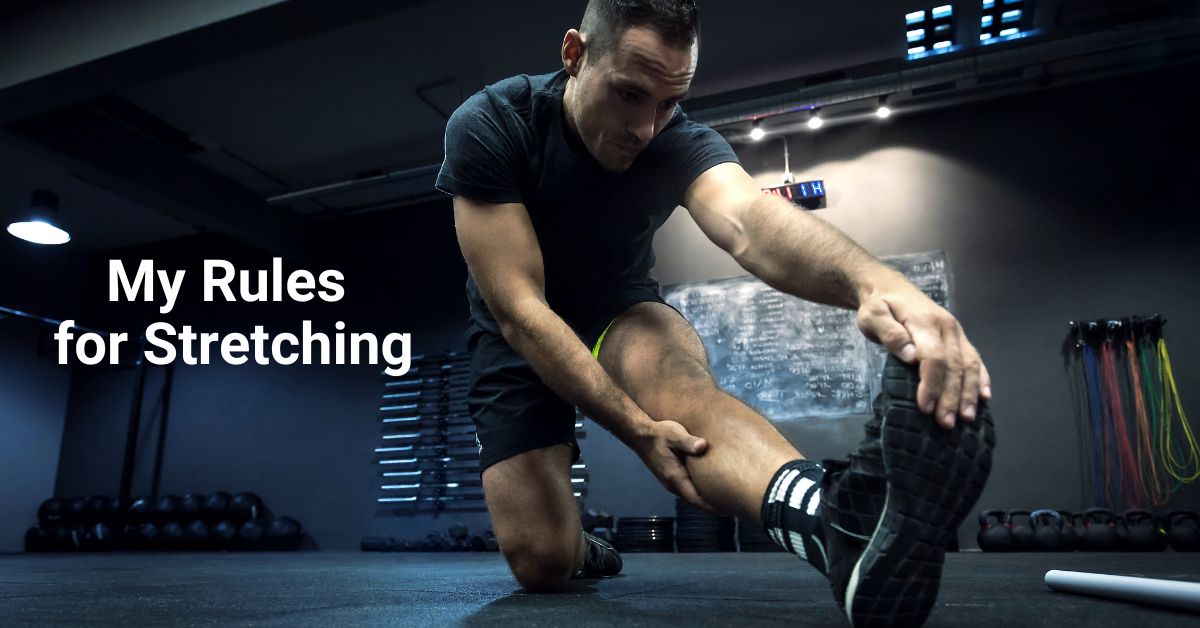What are stretches for?
If you're like most people, you may feel like you should be stretching more. Patients tell me this all the time.
"Ugh, I know I should be stretching. It's just so confusing, trying to figure out which stretches I need, and I never know if I'm doing them right."
But first, let's answer the question: "What does stretching actually DO?"
Stretching is a tool, and like all tools, it has a specific usefulness. And if we don't know what this tool does, we'll just be guessing about when it might be useful.
I see stretches as a mobility tool. Meaning, if your hip should be able to bend 90 degrees in a certain direction, but instead you can only bend 30 degrees -- stretches can help restore your missing flexibility.
Or as I like to say, stretches "loosen tight things". They increase your range of motion.
Can tight muscles cause pain?
I consider a lack of flexibility to be the number one cause for all "body" pain -- that is, pain we have in our moving parts.
This includes low back pain, knee, hip, shoulder, neck, ankle -- most of the pain that brings people in to see me.
Here's why I believe "stiffness", or lack of flexibility, can contribute to body pain.
We have about 350 "moving parts". And each one has a normal range of motion it should be able to move through. Your elbows, hips, knees -- all need to be able to move freely, in order to do our daily life activities in a safe way.
And if our range of motion is limited (by, say, tight muscles), that means we may be prevented from moving in a safe way -- and forced to move in a less safe way, that can hurt.
Imagine if you were throwing a baseball, but your elbow joint was fused -- you couldn't bend it at all. Trying to throw a ball would be very awkward, you wouldn't be able to throw very hard or very long, and you'd probably start getting shoulder pain from being forced to throw so weirdly.
I believe the same thing can happen with ANY joint that's too stiff.
Just because you have some stiffness is no guarantee that you'll hurt, but I see stiffness as making the risks of injury higher. If you're forced to move less naturally, over time, this can lead to hip, neck, back or knee pain.
And stretches are a perfect tool for restoring your normal flexibility (along with massage, which we'll talk about in another post).
How to tell if you need a stretch
Since stretches restore flexibility, first I check all your "moving parts", to see if any of them are too stiff (can't bend as far as they should).
If we find some stiff things, we simply "plug-in" the stretch that fixes that thing.
Tight hamstrings, can't touch your toes? Hamstring stretch.
Can't pull your heel to your butt? Quad stretch. And so on.
Finding the tight things is easy, once you learn how. Then, we'll give you a stretch that restores that missing flexibility -- usually over a week or two at most.
My rules for stretching:
There are 3 elements to a stretch, and all 3 have to be done right for the stretch to work:
- How aggressively you hold the stretch
- How long you hold the stretch
- How often you hold a stretch
If any of these elements isn't done properly, your stretch may have no effect. Meaning, you won't get any more flexible over time.
If you've ever tried stretching, and you feel nice and loose today, but then tomorrow, you're just as stiff as you were before...this is usually why. Some elements of your stretch were missing.
Here are the rules I give my patients for all stretches:
- Make the stretch "barely tolerable". Meaning, you can handle it, but you're a little miserable
- 1-2 minutes per stretch. Holding a stretch long enough means you get more flexibility from it
- Stretch daily. Stretching once a week isn't often enough for most people to see steady improvements in flexibility
Following these rules helps us achieve the goal of stretching -- to gain a little more flexibility every day you do them.
Then, once your flexibility is normal (within a week or so), you're done! You don't have to stretch every day, since you fixed that problem.
Then, just check your flexibility every so often (maybe once a week) to make sure you still have the normal range of motion.
This way you'll catch stiffness just as it's starting, and "touch-up" your flexibility for life.
And this is the easy part! I spend about 10 minutes per week stretching. That's it. Not hard to do at all.
Choosing the right stretches for you
With my patients, checking mobility is one of the first things we do.
Then, based on what deficits we may find, I'll prescribe a stretch that addresses their specific deficits.
There are literally millions of stretches (which you'll find on Youtube and Instagram!), but it's a very short list of stretches most people actually need.
And once we find the ones you need, they'll be the same ones you need for life. Rarely do I see patients who develop NEW tight spots in other muscles.
Typically we all have our own unique "problem areas" that, once fixed, we only have to "touch-up" occasionally for life, to stay active & pain-free.
I hope this helps! If you're hurting -- even for a long time, or you're in severe pain -- I'd love the chance to help you get back to 100% again! Just give us a call.

